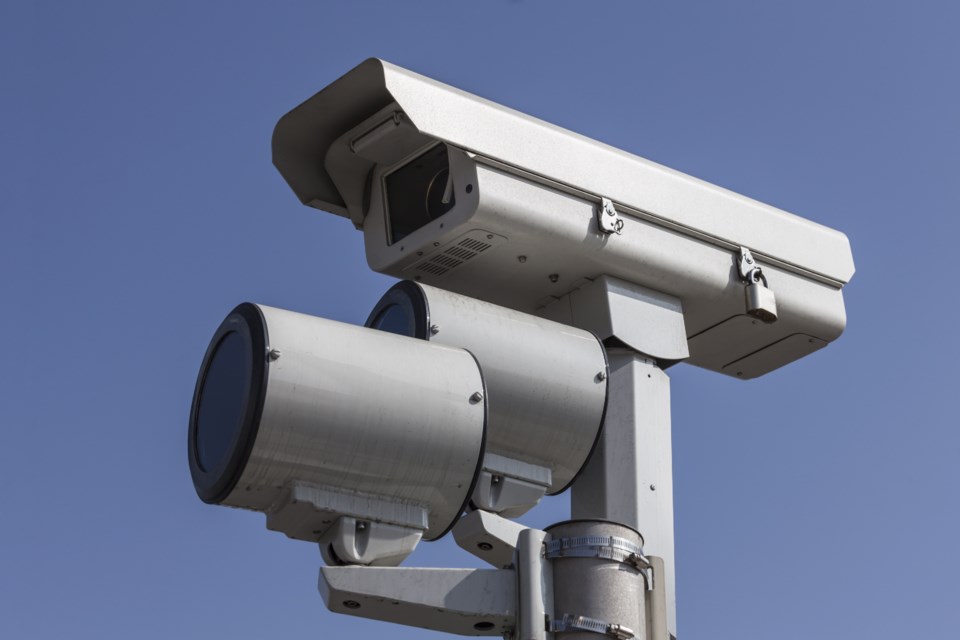Admittedly, when I read the first page of the report that said that staff was not recommending red light cameras, I was a little peeved.
“Here we go again,” I thought, “In the battle to actually make the town more pedestrian friendly, we lose again to the inalienable rights of the single-occupant vehicle to drive as bad as they want to drive.”
On this issue, I have a bit of a temper, you see.
Spend any time out there on your own two feet, and you know the streets are a dangerous place, and while you might have control over your own actions, you have no control over what people behind the wheel of a car can do.
Examining the report though, it’s clear that maybe red light cameras are a solution looking for a problem.
According to statistics provided by staff, red light cameras are effective in reducing right angle collisions, or T-bones if you will, by 25 per cent.
Sounds impressive, but these types of collisions only account for six per cent of the total collisions as chronicled over a five-year period between 2013 and 2017.
The most common type of collisions is a rear end crash, which accounts for nearly one-third of all crashes in Guelph during the studied five-year period. And do you know what type of crash that red light cameras exacerbate at a rate of 15 per cent?
So maybe we don’t need red light cameras, or at least read light cameras aren’t going to solve our problems with traffic safety.
Ask the average person what they think the major traffic issue is in the city, and they will probably tell you it’s speed. A lot of drivers out there seem to have a need for speed, and they have no problem filling that need.
The staff report on red light cameras suggested that reducing speed in school zones and residential areas should be the priority, and it offers several ways to do that, like making crosswalk lines and lights more visible, improving cycling infrastructure, and creating more community awareness.
I’m sorry, but do people not know that speeding is illegal?
And isn’t there a famous quote about what doing stuff over and over again means?
I don’t mean to bash on city staff because they are fairly limited in terms of what they can do, and frankly, this is a cultural problem more than a policy one.
A report published by Transport Canada in 2007 said that seven out of 10 Canadians believe speeding is dangerous and that it leads to an increased risk of accidents, but they do it anyway. The report also said that speeders, on average, say they go between 10 to 12 kilometres per hour higher than the posted speed limit, but most drivers underestimate how fast they’re really going.
That kind of puts in a pin all those people that want to increase the speed the limit who say, “Hey, everybody speeds anyway.” Is there any reason to expect that people currently going 12 kilometres per hour above the speed limit won’t go 12 kilometres per hour above a higher limit?
Strangely enough, even just talking about speeding feels like we’re talking around a bigger problem.
I found an article called “Four Arguments that Make a Higher Speed Limit in Ontario a Good Idea,” and number three was the suggestion that there are too many cars on the road creating gridlock and confusion. In other words, there are so many people on the road that you might end up crashing into one inevitably.
It’s worth saying that no problem involving too many cars has ever been solved by trying to accommodate them. Building more roads doesn’t reduce traffic and building more parking spaces doesn’t open parking availability.
Meanwhile, the CAA reported last year that in Toronto, only eight out of every 100 cars had a passenger. If that number went up to 20, then $750 million in operating and infrastructures costs would be saved, according to the report.
So what does this have to do with speeding?
Perhaps that we should look at the problem as not a matter of speeding, and a matter of parking, and a matter of congestion separately, but rather it’s a matter of there being too many cars. One might say we’re infected by cars.
Interestingly, the World Health Organization called road safety a public health issue in 2004, saying that the number of people killed and injured on the world’s roads would increase by 60 per cent between 2000 and 2020 as the number of drivers in developing countries increased.
Is it too much to suggest that an overabundance of traffic and speeding is a public health crisis? You may scoff, but there’s a surprising amount of research that’s trying to point that way.
In which case, red light cameras might be the equivalent of a band-aid, and at this point we should be at least going for the first aid kit.
